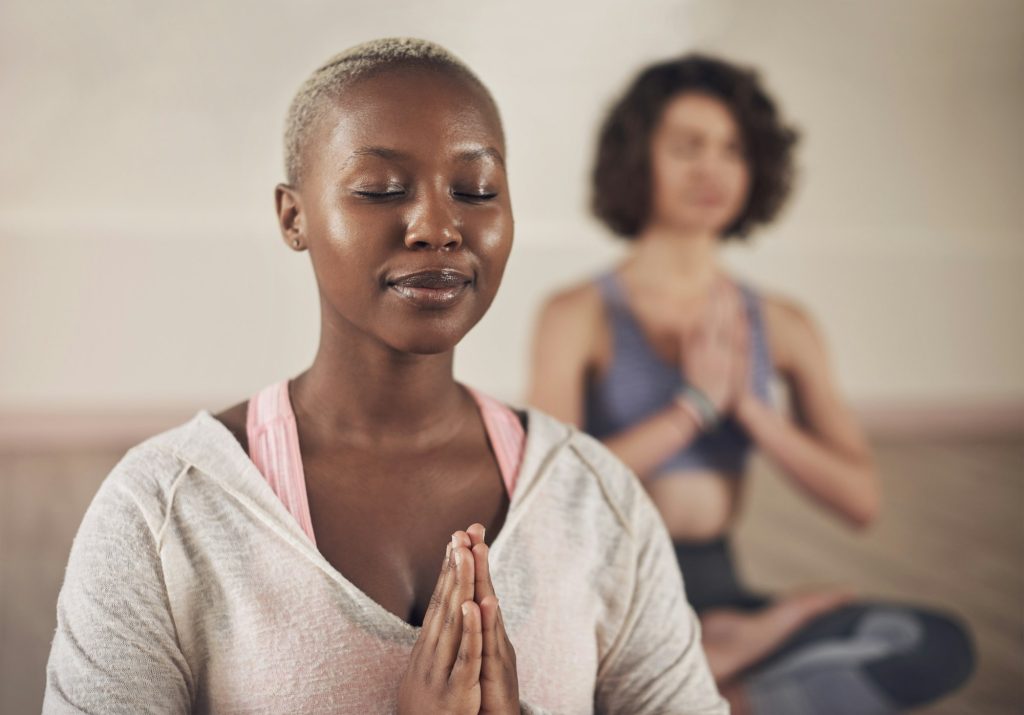A Guide to Finding Inner Peace and Focus
Meditation is an ancient practice with profound benefits for both mental and physical well-being. With numerous techniques and approaches available, meditation can be tailored to fit individual preferences, schedules, and goals. Whether you are a beginner looking to start a meditation practice or an experienced meditator seeking new techniques, this guide explores various methods, the benefits of each, and tips on getting started.
Why Meditate?
Meditation is the practice of focusing the mind to cultivate awareness, clarity, and calmness. It’s been shown to reduce stress, improve concentration, enhance emotional well-being, and even support physical health by lowering blood pressure and reducing inflammation. Meditation works by training the mind to focus on a single point, making it easier to let go of distracting thoughts, relax the nervous system, and experience a sense of inner peace.

1. Mindfulness Meditation
Mindfulness meditation is one of the most popular and accessible forms of meditation. The practice involves observing thoughts, feelings, and sensations without judgment, helping to develop a greater awareness of the present moment.
- How to Practice: Sit comfortably, close your eyes, and focus on your breath. Notice each inhale and exhale. When your mind wanders, gently bring it back to the breath without judgment.
- Mindfulness Variations: You can also practice mindfulness by observing sounds, bodily sensations, or even emotions as they arise, acknowledging them without becoming attached.
Benefits of Mindfulness Meditation
Mindfulness meditation improves emotional resilience, enhances focus, and reduces stress and anxiety. By cultivating a non-judgmental awareness of thoughts, it helps practitioners understand themselves better and respond to life’s challenges more calmly.
2. Guided Meditation
Guided meditation involves listening to a guide or teacher who leads you through a meditation session. This form of meditation is often audio-based, making it convenient for beginners or those looking for support and structure.
- How to Practice: Use a meditation app or listen to recordings on platforms like YouTube or Spotify. Close your eyes and follow the guide’s instructions, which may include breathing techniques, body relaxation, or visualization exercises.
- Guided Meditation Options: There are many types of guided meditations, including those focused on relaxation, sleep, stress relief, or specific goals like boosting confidence.
Benefits of Guided Meditation
Guided meditation provides structure and guidance, making it ideal for beginners. It’s also a helpful option for anyone seeking to explore different types of meditation or deal with specific issues like anxiety, sleep problems, or emotional healing.
3. Loving-Kindness Meditation (Metta)
Loving-kindness meditation, or “Metta” meditation, focuses on cultivating compassion, empathy, and kindness. The practice involves mentally sending goodwill and positive thoughts to oneself and others, fostering a greater sense of connection and love.
- How to Practice: Begin by sitting comfortably and focusing on your breath. First, direct kind wishes toward yourself, using phrases like “May I be happy,” “May I be healthy,” and “May I be safe.” Gradually extend these wishes to others, starting with loved ones, then acquaintances, and even people you may find challenging.
- Expanding Your Practice: Over time, you can extend loving-kindness to all living beings, broadening your capacity for compassion and empathy.
Benefits of Loving-Kindness Meditation
This technique helps reduce anger and resentment, boosts positive emotions, and enhances social connections. By focusing on kindness, it can also improve self-compassion and emotional resilience.
4. Body Scan Meditation
The body scan is a form of meditation that focuses attention on each part of the body, often used to release physical tension and increase awareness of bodily sensations. This technique is ideal for relaxation and connecting the mind with the body.
- How to Practice: Start at your feet, noticing any sensations there (warmth, tingling, or relaxation). Gradually move up your body, focusing on each area and consciously releasing any tension you find. Continue this process up to the top of your head.
- Body Scan for Sleep: For those with sleep difficulties, doing a body scan before bed can help relax the body and quiet the mind, easing the transition to sleep.
Benefits of Body Scan Meditation
The body scan promotes relaxation, relieves stress, and increases body awareness. It’s an excellent practice for people who hold tension in their bodies and need to cultivate a deeper mind-body connection.
5. Transcendental Meditation (TM)
Transcendental Meditation, often abbreviated as TM, is a silent mantra-based technique developed by Maharishi Mahesh Yogi. Practitioners repeat a specific sound or word, called a mantra, to settle the mind into a state of profound relaxation and inner calm.
- How to Practice: TM is typically practiced twice daily for 20 minutes each session. Practitioners silently repeat a personalized mantra, focusing on the sound and allowing the mind to settle.
- Personalized Instruction: Because TM requires specific training, it is usually taught by a certified instructor who provides a unique mantra for each practitioner.
Benefits of Transcendental Meditation
TM has been shown to reduce stress, improve mental clarity, and lower blood pressure. Its structured approach provides a deeply relaxing experience, making it ideal for people seeking a traditional, mantra-based meditation practice.
6. Zen Meditation (Zazen)
Zen meditation, or “Zazen,” is a form of seated meditation that is central to Zen Buddhism. It focuses on breath awareness and developing insight into the nature of one’s thoughts and experiences.
- How to Practice: Sit cross-legged on the floor or on a meditation cushion, with a straight spine and your hands resting in your lap. Focus on your breath, counting each inhale and exhale if needed to maintain focus. Zen meditation often encourages observing thoughts without attachment, letting them pass like clouds in the sky.
- Strict Posture: In Zen meditation, posture is important, as it symbolizes alertness and attentiveness. Maintaining a straight, upright posture helps to promote mental clarity.
Benefits of Zen Meditation
Zen meditation enhances focus, increases self-discipline, and deepens spiritual insight. It’s a powerful practice for those interested in self-discovery and exploring a traditional meditative approach.
7. Visualization Meditation
Visualization meditation uses mental imagery to create positive states of mind. This type of meditation can be used for relaxation, motivation, or emotional healing by visualizing calming scenes or imagining achieving personal goals.
- How to Practice: Sit comfortably and close your eyes. Begin by visualizing a peaceful scene, such as a beach or forest, allowing yourself to feel immersed in that setting. Alternatively, you can visualize yourself achieving a goal or feeling a particular emotion, like confidence or calmness.
- Personal Goals: Visualization can be tailored to specific goals, such as visualizing successful public speaking or fostering feelings of gratitude.
Benefits of Visualization Meditation
Visualization boosts creativity, reduces stress, and fosters positive emotions. It’s an effective technique for building confidence and motivation, making it popular in both personal and professional development.
8. Chakra Meditation
Chakra meditation focuses on energy centers, or “chakras,” within the body. By visualizing and balancing each chakra, practitioners aim to achieve physical and emotional harmony.
- How to Practice: Sit or lie down comfortably. Start at the base of the spine, visualizing a specific color and sensation at each chakra point as you move up to the crown of your head. Spend a few minutes on each chakra, breathing into that area and focusing on bringing it into balance.
- Visualization and Affirmations: Each chakra corresponds to a color and specific affirmations (e.g., “I am grounded” for the root chakra), which can be incorporated to deepen the practice.
Benefits of Chakra Meditation
Chakra meditation can help balance emotional and physical energy, promoting well-being and self-awareness. It’s particularly useful for people interested in energy healing and exploring their inner spiritual dimensions.
Tips for Developing a Consistent Meditation Practice
Creating a sustainable meditation practice requires patience and consistency. Here are some tips for making meditation a part of your daily life:
- Start Small: Begin with just 5–10 minutes each day, gradually increasing the time as you feel more comfortable.
- Create a Dedicated Space: Set up a quiet and comfortable spot for meditation, free from distractions.
- Schedule Your Practice: Try to meditate at the same time each day, whether it’s morning, lunchtime, or evening, to build consistency.
- Be Patient: Meditation is a skill that develops with time. If your mind wanders, gently bring it back without judgment.
- Use Apps or Resources: Meditation apps like Calm, Headspace, and Insight Timer provide guided sessions, timers, and tracking features that can help you stay motivated.
FAQs about Meditation Techniques
Q1: Which meditation technique is best for beginners?
Mindfulness and guided meditation are excellent starting points for beginners, as they provide structure and are easy to follow.
Q2: How long does it take to see benefits from meditation?
Some people notice relaxation benefits after a single session, but most see more profound changes, like reduced stress and improved focus, after several weeks of regular practice.
Q3: Do I need any special equipment for meditation?
No, meditation requires no special tools. However, a comfortable seat or cushion can help make your practice more enjoyable.
Q4: Can meditation help with sleep?
Yes, meditation, especially body scan and guided meditation, can promote relaxation and improve sleep quality by calming the mind before bed.
Q5: How often should I meditate for the best results?
Ideally, meditating daily provides the most consistent benefits. However, even a few sessions per week can have a positive impact on stress and mental clarity.
Meditation is a journey that can bring peace, insight, and improved well-being over time. Whether you prefer breath-focused techniques, visualization, or guided meditations, the key is to practice consistently, be patient, and enjoy the process. By exploring different methods, you’ll find what resonates most with you and discover a powerful tool for navigating life with clarity and calm.
